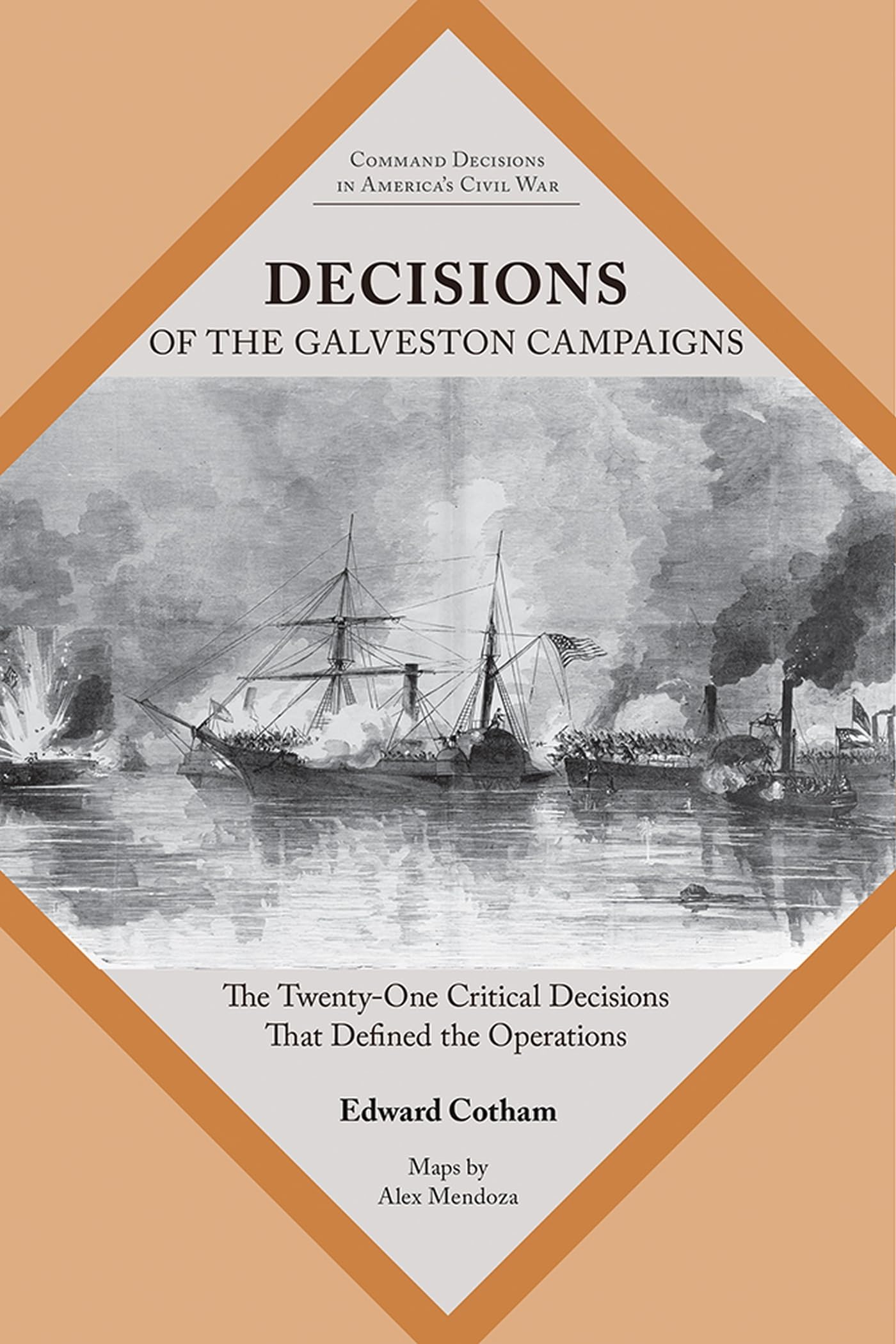Book Review: Decisions of the Galveston Campaigns: The Twenty-One Critical Decisions That Defined the Operations
Decisions of the Galveston Campaigns: The Twenty-One Critical Decisions That Defined the Operations. By Edward T. Cotham Jr. Knoxville, TN: The University of Tennessee Press, 2024. 170 pp. $29.95.
Reviewed by Neil P. Chatelain
Edward Cotham’s Decisions of the Galveston Campaigns is the latest in the University of Tennessee Press’s Command Decisions in the American Civil War series. As with other books in the series, this is not a standard narrative of the campaign. Instead, it focuses on the critical-decision methodology by looking at key decisions that impacted the course of the war on the Texas coast. The book follows a standard repeated format by introducing a critical moment, evaluating options leaders might have taken, then exploring the ultimate decision made and how it impacted events overall.
Though it follows the same critical-decision methodology, Decisions of the Galveston Campaigns is distinct among the Command Decisions in the American Civil War series. For one, it is the first to explore the Trans-Mississippi theater, which is most welcome. For another, it does not cover a single battle or campaign, instead exploring activity along the entire Texas coast from late 1862 to early 1864 via multiple campaigns. The central focus of said campaigns is United States efforts to capture and hold Galveston, the largest city and most important port in wartime Texas.
Cotham’s book examines decisions in numerous Galveston campaigns, including the initial capture of Galveston in 1862 by the United States, the Confederate New Year’s assault to recapture the city in 1863, thrusts and counterthrusts along Sabine Pass in 1863, the oft-forgotten overland Louisiana effort in late 1863, and efforts to land at Brownsville, on the border with Mexico, and march north in late 1863 and early 1864. Even though not every campaign examined is directly about Galveston, Cotham does a good job in showing that the Texas port was always the ultimate objective for any major thrust towards the Lone Star State.
The decisions that Cotham has deemed critical are varied, including at political, strategic, operational, and tactical levels. Some decisions focus on appointment of leaders in Texas, political decisions to place Texas at the forefront, decisions on where to launch invasions, and tactical decisions about whether to continue an assault or not. It was refreshing to see a focus on both the minutiae of battle, as well as the big picture, showing how the entire coastal war was interconnected.
Since the book does not follow a strict narrative format, those unfamiliar with Texas in the Civil War or Galveston’s role in the conflict may become muddled in the decisions without fully comprehending the context. However, even though Cotham admits that the book is better for readers already familiar with the space and time, inexperienced readers will largely be able to follow the decisions. When appropriate, Cotham does take time to elaborate on the larger war to ensure readers have time to process the decisions in the grander scheme.
The book ends with a walking tour of Galveston, as well as descriptions of the battlefield at Sabine Pass and museums in Texas with artifacts and exhibits related to the Galveston campaigns. Their inclusion is both helpful for people visiting the sites and for anyone looking to learn more about the Civil War in southeast Texas.
Cotham is the best writer to have tackled this work. He has written extensively about Galveston and Texas in the Civil War, with much of the bibliography and notations citing his own previous works. He also regularly provides tours of coastal Texas to help visitors to Galveston understand these campaigns on the scene. If there was anything to complain about, it is that the book does not make extensive use of archival materials, though many published records and primary accounts are utilized, as well as the best related secondary sources.
Decisions of the Galveston Campaigns is a most welcome addition to both the Command Decisions in the American Civil War series, as well as to the literature about the Civil War in Texas. Those who are fans of the book series will love this latest installment, and those who like studying the coastal war, the Lone Star State, or naval aspects of the Civil War will find it both enjoyable and refreshing.


This is high up in my to-be-read pile. I love this series, and I’m excited to see them expanding into the Trans-Mississippi.